Search the Community
Showing results for tags 'Airfix'.
-
A 1/72 Hawker Typhoon is a serious omission from my collection. This has been languishing in the stash since it came out in 2013. The plastic looks OK, I recall reading about this kit and it's slightly unusual design with the wheel bays forming the lower parts of the cockpit and being an important structural part of the wings. I think its a good design but it means some thinking about the painting before joining parts together. (Yes, I know, nasty mold ejection marks). As usual, we start with the cockpit. Additions here are the Yahu instrument panel, the Special Hobby 3D print seat and gun sight (yet to be added). There are lots of posts about Typhoon cockpit colours, but very few colour photos of the real thing, or actual cockpits to look in. There are some good threads featuring a cockpit section at Duxford on the LSP site. I've painted the cockpit and seat as described by Chris Thomas and others in the BM threads. Airfix would have you paint everything with Humbrol 78 - interior green. Pah. The Yahu i/p is pretty good. This example looks a bit tatty, especially enlarged this much, as I've been messing about with it too much. What you see here is a mix of Yahu (the i/p and compass) and Airfix (the side panels and compass holder). I replaced the tube the compass attaches to. Looks better in situ. And let's face it, it's never going to be seen again anyway (but I enjoyed it). Next steps; get the fuselage closed and the wings on. Will they fit? Until next time, Charlie
-
Hi All, My latest completion is Airfix' lovely Wellington, completed as a Mk.Ic R1378 of 311 (Czechoslovak) Sqn, based at RAF East Wretham in 1941. Here's a photo of the aircraft (the middle of the 3): As you can see the scheme is quite unusual, with the wavy camouflage demarcation, the blacked out roundel and the lack of beam windows. The build was pretty much OOB, albeit with an Eduard mask set. The markings were cut using a Silhouette Portrait 3. Here's the WIP if anyone is interested: Anyway, on with the photos! Here's a couple of shots with another twin-engined Bomber Command stalwart from the early war years: And with a couple of accessories from the Bomber Command resupply set: This has been a thoroughly enjoyable, straightforward build and I am pleased with the outcome. Thanks to all who have added kind words along the way - it has been much appreciated! Thanks for looking, Roger
- 23 replies
-
- 60
-

-
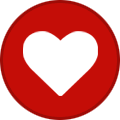
-

-

-
Expected in Spring (May ?) 2024 - ref. A09010 - Consolidated B-24H Liberator https://uk.airfix.com/products/consolidated-b-24h-liberator-a09010 V.P.
- 350 replies
-
- 46
-

-

-
Hi all - it's been about 9 months or so since I last spent some time at the bench, due to a number of factors including moving house, job, and life stuff in general taking up most of my time... so I have decided to try and get some mojo back with a relatively simple build. I know very little about jets, but the Airfix 1/72 MiG-17F looked like a pretty straight forward build, plus I have always liked the looks of this stubby little fighter. I plan on doing this one completely out of the box with no modifications, to avoid getting too bogged down in the details. I had heard of some fit issues with this kit, especially up front around the nose panels, so dry fitting up front was going to be a must to see what could be done to ease any fit issues. The main culprit is the cockpit tub pushing the front of the fuselage out a bit so that the under-nose piece doesn't fit, but with some sanding around its edges, the fit issues look largely manageable. I will still have to add spacers to the nose ring piece as it is too narrow and doesn't fit as well. With the fit tested, I decided to get the cockpit done. It is simple but detailed enough, even if the instrument panel is a flat piece with a decal. Next, the instructions show you to add 20g of weight to the nose forward of the cockpit. I am no physicist but without a very heavy material there's no way 20g fits in there... so I have loaded up the forward fuselage around the cockpit with weight... I hope it will be enough....! Next, the exhaust pipe and I should then be in a position to close up the fuselage and wings. Hopefully that will go smoothly. Thanks for looking! Brad C
-
Before XM607 became famous by bombing the runway at Port Stanley on the Black Buck missions she was flown to the US on the Red Flag 77, were she had a middle stone/dark earth underside paint scheme. Unfortunately this was unsuccessful as the pilots reported they couldn't really hide the Vulcan massive shadow when flying over the Arizona dessert at 500 feet above ground level so they were authorized to fly as low as 300 feet agl. Due to waiting for a new nozzle for my airbrush (coming from Germany) and after speaking with Tom Probert at the last club meet I decide I would finally start the Vulcan that been sat in the stash for nearly 2 and 1/2 years, I'd already goth old of the Kits World decals which has the right sqn and serial number marking (I think you can model any B2 variant) to do the Red Flag 77 scheme when I received the kit. Must say I'm impressed how quickly such a large amount of plastic can go together My intent is to position the nose up 20-30 degrees as if on climb after take off so I built a plastic block and drilled through a 10mm hole for the acrylic rod and then used another block to prevent the rod from rotating. Its a bit rough but I made it oversize so I can file to fit inside the bomb bay. Next thing to do is find a lump of real wood for the base, don't want MDF this time.
-
Here we go again, my friends. First some history. On the night of 2nd May 1945 Bomber Command performed their last raid of the Second World War, against Kiel and the surrounding area. Included in the operation were twelve Mosquito B.XVI aircraft of 608 Squadron and it is generally accepted that the last aircraft to bomb was PF505, 6T-D, flown by the CO of 608, W/Cdr Gray, with Capt Mehre as navigator and bomb-aimer. But the aircraft that interests me more is Mosquito RV347, 6T-A, flown by F/Lt Hobbs with P/O Dennis. Facing no lesser dangers than any other crew that night they carried their 4000lb bomb all the way to Kiel, only to have the release mechanism hang up. Apparently unknowingly, they then flew all the way home and landed safely with the fully armed weapon still on board. No mean feat and, in my mind at least, that means they had The Last Cookie Left in the Jar. So, in honour of all unsung heroes everywhere, let us begin.
- 296 replies
-
- 19
-

-

-
- Airfix
- Mosquito .
-
(and 1 more)
Tagged with:
-
Expected in Spring (May ?) 2024 - ref. A06023 - Boeing Chinook HC.1 Source: https://uk.airfix.com/products/boeing-chinook-hc1-a06023 V.P.
- 156 replies
-
- 24
-

-

-
New airfix kit in progres is a 1/72nd Fokker E.II/E.III Eindecker Source: http://www.airfix.com/uk-en/news/workbench/workbench-behind-the-scenes-at-airfix/ V.P.
-
I originally had the idea of doing a Whatif Lightning FGR.7 with ALL the weapons mounted to it with some trumped up idea of Jaguar and MRCA being delayed or cancelled or whatever other politically expedient excuse would pass muster. Then I decided I had enough on the go without spending ages umming and ahhing over whether something should be an FGx, or an FRSx, or a BRx etc etc. So, because I want to model a Lightning in Beast Mode, I've decided to do an F.53 diorama based on the numerous photos from 1967-1969 of the BAC display at various Airshows (exhibit A & B below courtesy of the internet). I'll be starting with the Airfix Lightning F.6 kit (for obvious reasons), and generally 3d printing the various bits that can't be bought or found for love nor money. As I've only recently bought a 3d printer this promises to be a doddle painful learning experience that I'm sure I'll regret ever embarking upon. So, onto the obligatory box shot... Fabulous artwork, note the inspired use of colour palette and copious amounts of alcohol leading to forgetting to finish the image.... (or whatever the excuse was)... For the F.53 specific weaponry I managed to obtain the Odds & Ordnance underwing stores kit from rossm on here. The CBLS is available though Air-Graphics, but the rest I can't find anywhere, so the list of bits to 3d print (as seen in photos above) is as follows: - JL100 double stack with overwing pylons - Matra 155 double mount (OAO kit is single mount only) - Matra 155 open cones (i.e. without frangible cover. These will be to modify the resin ones I already have which are too fiddly to paint!) - Ventral rocket pack (how has this never been available?) - 540lb bombs - Drop tanks (from a Strikemaster but I'm not buying a whole kit just for 2 of these) - RAE Universal Twin 7.62mm Gun Pod - Firestreak ventral pack - Red Top ventral pack - Reconnaissance ventral pack - 1000lb retarded bomb with semi-deployed parachute (still scratching my head over how to do justice with this one) - Aden cannons in a naked state - A multitude of 2" and 3" rockets..... painting 188 of these promises to be (insert expletive here) delightful The vast majority of the above don't have easily accessible drawings (and I'm not willing to join a billion sites and get spammed for the rest of my life just for some blueprints), so I'll mostly be working from a handful of reference books, photos and whatever Google shows me. I intend for things to be detailed enough that an armourer would recognise what they are supposed to be, but I'm not going to model every rivet and safety catch, mainly because my printer won't do that level of detail, but also because I want to finish this before the apocalypse. As far as the airframe goes, unless someone can direct me to some 1/72 Queen's Award roundels I'll likely be doing the G-AXEE Kuwaiti scheme from the Paris Airshow rather than the G-AWON scheme seen in most other photos from the period. Either that or I need to get creative with Microsoft Paint and some waterslide paper. I've already made some reasonable headway with design & print loops to refine some of the parts, but its late, I've been gardening ALL weekend and I really need a shower, so a progress-so-far-post will have to wait until tomorrow. Stuart
-
This will be my contribution to this particular party. Yes it’ll be another Airfix Mosquito, along with a selection of after-market bits to slow me down even further. The Xtradecal sheet has one particularly intriguing option, shown below. It’s KC-L allocated to 617 squadron - a Dambusters Mosquito. This looks to be unusual as although 617 squadron used a number of Mosquitos in the pathfinder role in the latter stages of WW2, I gather that these were loaned from other squadrons and usually didn’t spend long enough with 617 to get their codes repainted. I’m guessing that 617 would have been using the borrowed Mosquitos very much in the ‘master bomber’ role, which I need to read up more about during the build. For inspiration I have these ‘Mosquito Pathfinder’ I am finding virtually un-putdownable, a first hand account of flying pathfinder missions. A definately recommended read. For now I’ll shuffle nervously towards the start line and wait for the starting gun.
- 83 replies
-
- 17
-

-
When Airfix released their "new" kit back in 2021 I put it on my list of things to buy when I had the cash available and this GB has finally given me an excuse I guess.😄 I have previously built 9 Mossies, starting with the original Airfix release way back in 1957, which I remember well as it had a part missing so I sent off the complaint slip and promptly received a complete replacement kit - no messing about with just sending the missing part in those days! That was followed by the Frog B.IV about 10 years later, and then 3 of the second Airfix multi-version release from 1972 onwards. After that came the Matchbox B.IX/NF 30 which I built as the night fighter version but attempted a "conversion" on a second old moulding Airfix one using the spare bomber parts. More recently I built the Tamiya B.IV to replace the inaccurate Frog one, and also the 2005 reboxing of the Airfix second moulding as an NFXIX. Over the years I have scrapped 3 models but I still have the NFII, B.IV,FBVI, FBXVIII, NFXIX and NF30 though the latter has been stripped ready for a complete refurbishment which I will do in parallel with this new build, though it won't be eligible for the GB as it is over the 25% limit. I was tempted to build a recce version for a change but then saw the bomber at a reasonable price so here it is. I won't bother with sprue shots as they are pretty well known by now. I was intending to build OOB but it seems the initial reports of how accurate the kit was were not entirely correct. Together with a few inaccuracies in the undercarriage assembly, the main problem seems to be with the bomb bay doors where Airfix have I gather inadvertently scanned those of a target towing plane pretending to represent a bomber, due perhaps to a lack of research. As the Freightdog replacement doors are not currently available I will have to modify the kit ones it seems. At least I will have the example of several other modellers builds to study as I go! Pete
-
Hello All Here is my take on the well known Airfix Folland Gnat T.1 in the Yellowjacks Aerobatics Team colours, c1964. Overall, it's a lovely little kit except for the panel lines which, like a lot of the newer 1/72 Airfix kits, are far too wide and deep. I decided to try a new method (to me)and filled them with 3D, UV cured resin, then, instead of re-scribing, I drew them on with a 0.3mm pencil after painting. The access panels (of which there are many !), were created as svgs and printed onto clear decal paper. The only add ons used were Wolfpack Resin seats and SBS resin wheels, although to be honest, the kit's wheels aren't too bad and could have been used. I decided not to use gloss yellow as I felt that I wouldn't get a realistic finish. Instead I opted for a matt yellow finish, then built up the gloss gradually with multiple coats of Johnson's Pledge. Being all yellow, I thought that the end result may end up looking a bit bland and toyish in the small scale, so to give it a bit of character, and after looking at some online photos, I decided to spray the upper wings and rear fuselage a slightly different shade of yellow. Paints used were predominately Vallejo Model Air with some Tamiya and Mig Ammo. Decals were OOB. The more observant will notice a lack of rear seat windshield. This is not a kit part and something that I did try to scratch-build. However, the actual item is made up of multiple compound curves and I just couldn't get it to sit properly, so gave up ! Thanks for reading and taking the time to look. Comments and critiques will be most welcome. Gary
- 19 replies
-
- 70
-

-

-
The workbench has recently looked like a hand grenade was dropped on it, 3 builds on the go with similar parts, the perfect recipe for a cock-up! Really enjoyed doing them though, Airfix really hit the mark with my aviation interests, although the Blenheim's fought a little at times. There is some speculation over colours on the Beaufort and Blenheim Mk.I, and I've mixed some of my own shades on the light Mediterranean blue and light earth, but not too bothered as long as they look about right. All paintwork is MRP lacquers. The builds are here: With 3 builds, I've not included all the pics, but there are a few more in the link below: Bristol Builds I haven't fitted the ASV aerials yet, but need to either get some or make some. Thanks for looking
- 22 replies
-
- 72
-

-

-

-

-
Well, I've been dithering about WHAT Mosquito I'd like to settle on as a subject- and also which kit. In the process of tidying up my "stash of doom", I rediscovered a bagged 48th Mossie, which I thought was a Tamiya B.IV. Well, I just pulled it out, and it turns out to be an Airfix FB.VI. (I wasn't completely wrong- there was a painted-up Tamiya cockpit/interior assembly in the bag, complete with spars that have nowhere to go on the Airfix fuselage.) I'd been thinking a post-war FB.VI might be interesting, but I also had another (even) less conventional idea, which also requires a "fighter nose" airframe. I've got a bit more investigation to do, so I'll leave you all hanging on the edge of your seats for the moment. (cough DD723?) (As I commented in the chat thread, I was also trying to talk myself into a 72nd Airfix PR.XVI, but now that I've caught up with the state of play in this build group, I see there are more than enough of that kit represented, so I'm just as happy to stick with this one.) bob p.s. I'm off to a meet today, as a voyeur and with a few kits to put on the club sales table. Even with a too-large stash, however, I won't rule out an "opportunity buy". For some reason I think I'll be especially aware of Mosquitos while I'm browsing...
-
On 16th June 1945, Squadron Leader Clifford Grainger Andrews DFC with 684 Sqn. made the first of two flights over Mt. Everest to help survey a second route to the summit. There’s an excellent article on the website of the New Zealand Airforce Museum. From his logbook, it’s evident that he flew a Mosquito XVI coded ‘O’ for the mission- although the serial is too small to read in photos. The June ORBs aren’t in the archive, but thankfully the May records are, and Mosquito ‘O’ appears as NS704. NS704 is a PR.XVI from the same contract and delivery dates (Between 24-3-1944 and 31-12-1944) as NS787, the aircraft illustrated in the photo below. Source: IWM Source: IWM This means an overall High Speed Silver finish, with SEAC roundels and ID bands in the same dark blue. The PRU Blue slipper tanks are noteworthy too. I plan to cut masks for all markings, although may use some of the kit stencils where necessary. As always, a little inventory to start with.
- 48 replies
-
- 10
-

-

-
Airfix is to release in Spring 2025 a 1/48th Supermarine Spitfire Tr.9 kit - ref. A05143 Sources: https://uk.airfix.com/products/supermarine-spitfire-tr9-a05143 https://www.facebook.com/officialairfix/posts/pfbid025p67UbcHsaGw31NDoe757dbq3zNoCCjaBeD3xiQDTzuaV8uEVZgyzCLcr7R7SJg5l Introducing the NEW MOULD 1:48 scale Supermarine Spitfire Tr.9! Arguably the most famous fighting aeroplane in history, with over 20,000 aircraft eventually produced, the Spitfire Tr.9 is a two-seater trainer aircraft. This highly detailed kit includes: • 128 parts • Two scheme options • Unique subject not previously available in injection moulded kit form • Fine rivet detail and slide moulded engine cowling • Specific post-war wing parts • Both canopies can be posed closed or open to reveal the detail in both cockpits • Decal options for an Irish Air Corps Spitfire Tr.9 and a famous post-war camouflage scheme Test build Schemes V.P.
-
I did promise @Johnson to do another Mosquito and I did promise to treat myself to a new tool kit this time - so I'm in with the Airfix B.XVI. I chose this kit as it has the fuel tanks provided, which you can see from the bomb bay (the newer PR.XVI kit does not!) I like bombers in black so I'm going to do the 109 Squadron option. I'm looking forward to this and everyone else's builds.
- 104 replies
-
- 9
-

-
Hello, Here's my next project, a dual build which will carry me through most of the year. I'm continuing the trend of building my oldest kits first, in case I can still use the decals 🙂. One of the kits is a newer repop I purchased in 2019 in Airfix's soft light grey plastic. The other was purchased in 2004, and it's the harder dark grey plastic. They will be a Seafire FR.47 and a Seafire F.46 respectively. I've seen build reports outlining fit issues with the FR.47 and I know the soft plastic works well with TET and may make the build easier. I'll also use a bunch of goodies, like the Barracuda propeller blades and the requisite Rob Taurus canopies. I also got miscellaneous bits (flying surfaces, exhausts, wheels, cockpit bits) from Hi-Tech which I'll put to use on one of them, likely the F.46. I'll have to check my "Spitfire Goodies" box as well to see if there is anything else there worth using. Here is the start. The newer decal sheet is much crisper in printing though I'm not sure if there will be a difference in behaviour. And the first challenge has raised its head: the instrument panel. It's molded in three levels, and I doubt any decal sheet would conform to all of them. The panel in the older sheet is also useless. IMG_5089 by Wlad Franco-Valias, on Flickr Unfortunately Airfix moulded all but one instrument face as flat discs, so my usual method of painting white first, then flat black and scratching the instrument details won't work here. I thought of punching out the individual instruments from the decal sheet, yet with only one usable sheet that's not a good plan. I've painted the panels with Tamiya LP-2 White for now while I figure something out. The other challenge is the control column with a solid spade grip. What was Airfix thinking? I'll scratch build the grips as the Mk 47 has a differently shaped grip. IMG_5090 by Wlad Franco-Valias, on Flickr While the kit is good, there are many things to correct and enhance which can make the build interesting. I've just completed a shake and bake kit, now it's time to get creative again. This may be it for a while. Cheers, Wlad PS - I recognize beauty is in the eye of the beholder, so please don't be offended if you prefer the Mk.47 over the Mk.46. 🙂
- 32 replies
-
- 17
-

-

-
Hi All, After a very difficult and stressful few weeks (which has included 3 unscheduled weeks in the UK), I am back on home soil jet-lagged and in need of some plastic relief. I must praise the modelling (and sleep) gods that tomorrow is a public holiday here due to the Monarch's Birthday (although it is not, but who am I to complain?!). Although I have built a couple of boxings of Auntie's Wimpy over the past few years, I feel like I have never quite 'nailed' it. This then is the perfect opportunity to rectify this situation. This time around I shall be building a Mk.Ic from this boxing: From memory, previous boxings were in Airfix' light grey, soft styrene, whereas this newer boxing uses the 'new' harder mid-grey plastic. Here's the sprues: The transfer to the newer plastic certainly does not appear to have done any harm, with the mouldings beautifully crisp. Here's the decals along with the only after-market addition: Although the boxing allows for an attractive early war scheme (a 9 Sqn aircraft based at Honington in December 1939), a bit of research turned up this rather attractive scheme: I have chosen to model R1378, the middle of this trio. 311 (Czechoslovak) Sqn were based at Honington when first formed, but by the time of this photograph in March 1941 they had moved to RAF East Wretham. There is a little information regarding the aircraft on this website: https://fcafa.com/2012/01/19/wellington-aircraft-of-311-sqn/ According to this R1378 crash landed at East Wretham after a starboard engine fire on 18th May 1941 following a raid on Bremen - the aircraft was piloted by Sgt Leo Anderle. Of note with the scheme are the high wavy camouflage demarcation, the non-standard roundel with the white overpainted with black, and the lack of beam gun positions - squadron, aircraft and serial codes are all in MSG. All make for a most pleasing scheme, so I shall look forward to some plastic butchery occurring soon! Thanks for looking, Roger
- 52 replies
-
- 22
-

-

-
So currently in the final stages of this Hellcat build which has gone remarkably well considering the kits aged provenance. Decals not so good ...should have used decal varnish (no idea what the correct name is)first ...so I lost a mainplane roundel ....round two with the decal varnish worked...although the decals are still bedding down with the red micro sol....we shall see. Anyway because im a piso git,I dont really want to stump up 12 quid for basically one decal. So an appeal to anyone who might have a spare FAA SEAC roundel or maybe a pair because you can guarantee they will be different ...anyone please ?
-
My entry will be this old Hasegawa Harrier: which will be built in the interests of stash reduction with a few minor improvements. Here are the sprues: usual crisp moulding in the hard, light grey Hasegawa plastic. I won’t be using the kit decals, but instead will use these from CtA to represent an aircraft from VMA 513 “Nightmares” operating from USS Tarawa in 1981. As I will be away from home from Monday touring New Zealand until the middle of April, I will miss the start and first few weeks of the group build. I have therefore made a bit of an early start, but well below the 25% mark. I have boxed in the nose gear bay and modified the nose to take a spare Airfix cockpit to replace the virtually non-existent Hasegawa one. I also sourced a bang seat from the spares box, not an accurate one, but better than the seat Hasegawa provide that looks more like one of those chairs used in nail salons where women get their toenails painted in pretty colours. seriously? Also sprayed a little primer. I’ll be back around Easter time to get properly stuck into it. AW
- 79 replies
-
- 12
-

-
Looking at the box cover for this kit, the Spitfire has the elliptical wings, yet in the pictures supplied of the built kit (unpainted, etc.), the wings have been clipped. A photo of a MK.IX on Wikipedia (BS456 UZ-Z of 306 (Polish) Toruński Squadron, RAF Northolt, November 1942), does not show the wings clipped, neither does ICM's 1/48 model of a MK.IX (#48061). As there were many stop-gap variants of Spitfires built to combat the latest Luftwaffe fighters, was this the only visible difference between the Mk.IX and the MK.IXe? Thanks in advance
- 4 replies
-
- Airfix
- Spitfire Mk.IXe
-
(and 1 more)
Tagged with:
-
Oh look, another Airfix PR.XVI kit! 😅 In October 2021, I used the excuse of going on vacation to make a stop in Dayton, Ohio to visit the National Museum of the United States Airforce. I had been wanting to visit this museum for years, as it hosts an enormous collection of extremely rare and valuable airframes. While going through the WWII gallery, I was pleasantly surprised to see a Mosquito tucked behind a famous B-24 Liberator. Their Mosquito had been modified to depict NS519, which was used in service of the USAAF. I made sure to snag a few photos, making plans to eventually build one. Then in 2023, Airfix puts out kit A04065, which has the very decals needed to depict NS519. That made for an easy purchase. I'll be building this one OOB , and will look nice next to my Revell Ju-88, also depicted as in the NMUSAF collection. Going over the instructions, it looks like an excellent kit. This will be a slightly delayed start, due to prepping for our annual IPMS show.
- 32 replies
-
- 14
-

-
Real life and the big yellow thing in the sky has kept me away from the bench over the last few months. Several kits were placed on it with the view to starting, but then removed, but I've finally made a start on 3 parallel builds. The bench looks like a plastic explosion! Several years ago, I did a twin Blenheim build before the new Airfix kit came out, so used the old Mk.IV and the Frog Mk.I: I have recently been refurbishing some bases and took the opportunity to get the Frog one out for a picture This latest endeavour started out as twin build of the Blenheim I and Beaufort Ia and I was rather excited at being able to call the thread 'A lovely pair of Bristol's', but managed to get a copy of the Blenheim IV with the 'Lorraine' markings on and had to include that too. This is one of my favourite schemes, inspired by the original Airfix box top. So, the plan is this: Some pics of the bare plastic with internal sub assemblies done: The engines look a little basic on the Blenheim, so are being replaced by some resin ones and props too Painting has begun. The green looks dark here, but looks fine in real life I've got some seatbelts on order, but apart from that, I'm not adding any further detail inside as there is enough Really need to get some kind of working method to doing these three to keep some kind of sanity on the bench! Cheers Neil
- 43 replies
-
- 21
-

-







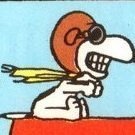



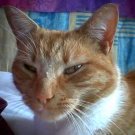

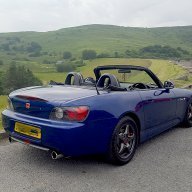
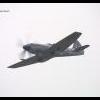
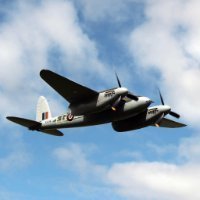
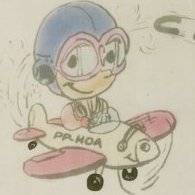
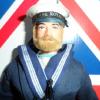
Wedge-TailedEaglePortraitRaptorDomains.thumb.jpg.41a306d3445a68f0f2df773e01776ea6.jpg)
